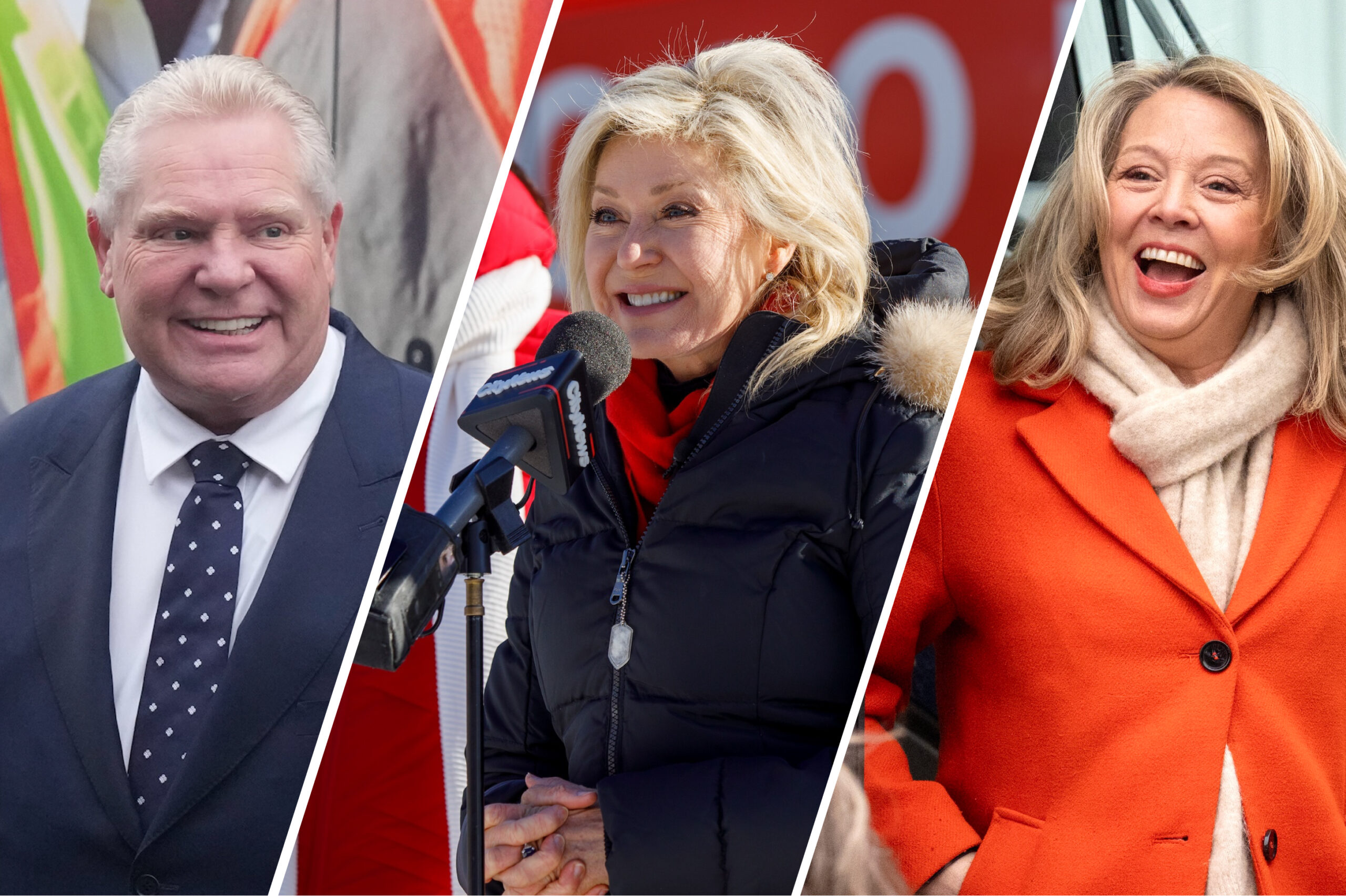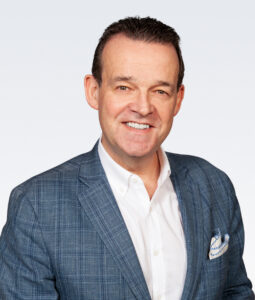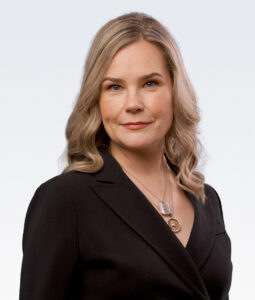Ontario’s election campaign continued this week as the immediate concerns over potential U.S. trade tariffs lessened after President Trump granted a one-month deadline extension to Canada. The threatened tariffs remain central to the election, but the pause provided room for other issues to emerge.
The three major parties have released their counter-tariff proposals, which share common themes: stimulus cheques, tax relief, a “Buy Ontario” mandate, and promoting interprovincial trade. Notably, both Bonnie Crombie and Marit Stiles have echoed Doug Ford’s plan to limit American goods in Ontario, including removing U.S. alcohol from the LCBO. It’s rare for parties to align so closely on one issue in an election campaign, but the timing appears to be working out in Ford’s favour. The cross-partisan unity that is happening across the country is a way for Ford to argue he is securing Ontario’s – and Canada’s – economic future against the threat of U.S. tariffs. As a result, tariffs have become the dominant narrative in the election cycle and the other leaders struggle to get other messages heard in the same magnitude.
Let’s examine each party leader’s platform.
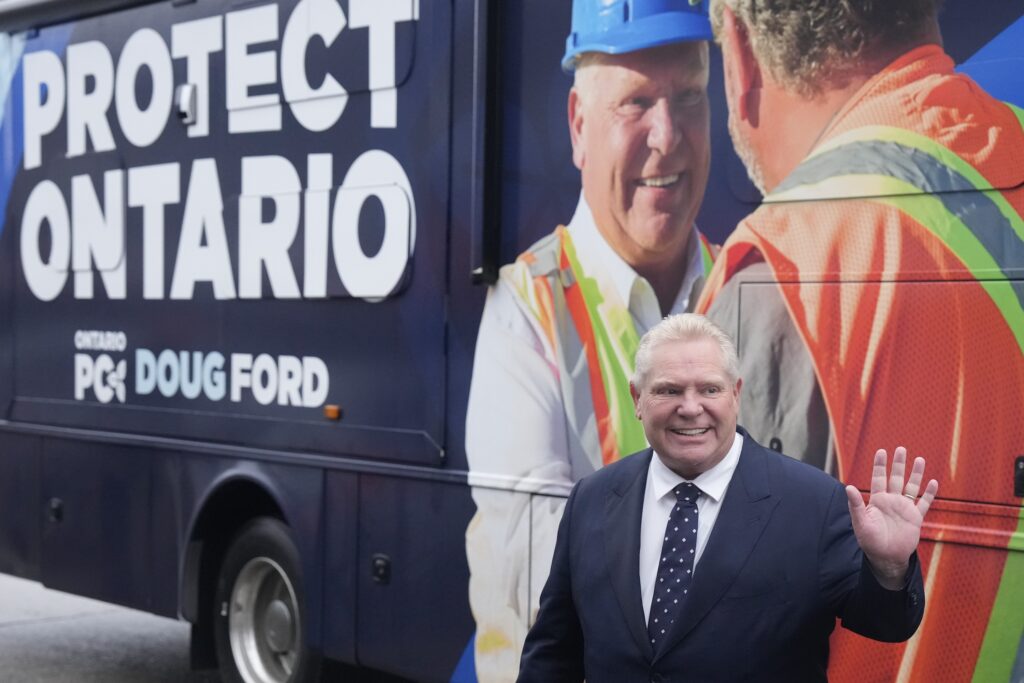
Doug Ford
Doug Ford thought a lot about the timing of this election, and the Trump tariff threat arrived at an opportune time for him in positioning his quest for a fresh mandate. However, there are striking similarities to David Peterson, the premier who also called an early election in 1990.
In the 1987 election, Liberal premier David Peterson won the biggest majority in Ontario history, with 95 out of the 130 seats. Peterson was advised to call an early snap election after only three years in office because economists forecasted an economic downturn in 1991. At first, Peterson’s snap election call was perceived to be in the Liberal’s interests, but the voters decided otherwise. Peterson’s Liberals were defeated and the NDP swept into office. While historians and media have viewed this early election as risky because of the Peterson example in 1990, the circumstances around the tariff threat and its economic consequences for Ontario have meshed nicely with Ford’s election call.
Just as he showed empathetic leadership during the COVID-19 crisis, Ford has positioned himself wisely as the leader of Canada-US relations – “Captain Canada”. During times of crisis, Ford leans away from being overly ideological or intellectual and communicates clearly to the public about shared challenges and easy to understand responses. The “Canada is Not for Sale” cap and ripping up the Starlink contract with Elon Musk has cast him a hero and leader among premiers. His recent track record has shown more effective leadership, which has allowed the public to overlook some of his previous governance mistakes – including allegations of corruption.
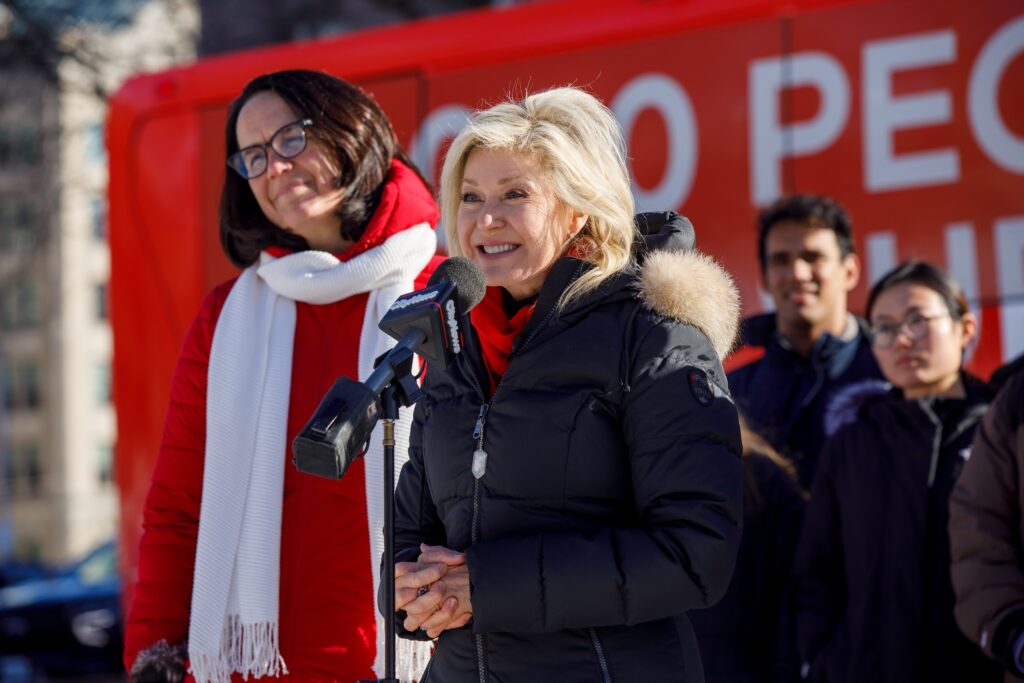
Bonnie Crombie
This is Crombie’s first election. In addition to introducing herself to the voters, her main challenges are getting her platform promises heard when all attention is focused on the tariff threats, downplaying her big city mayor persona for rural voters and delivering nuanced messages that do not drive away NDP voters. As seen in 2022, Ontario Liberals and the NDP have a similar vote share and are fishing in the same voter pool. Crombie needs to find a way to differentiate herself from the federal cousins – Liberal Party of Canada – and the Ontario NDP. In the last election, the NDP had a more efficient vote, resulting in official opposition status and the OLP was left without official party status. Polling still indicates that vote splitting between the OLP and Ontario NDP is still an issue that can hurt possibly both parties.
To date, Crombie has released four major policy ideas on housing, decreasing income taxes for the middle class by 22 percent, increasing primary care physicians, and – more recently – creating a stimulus package to respond to the possible tariffs. Her “Fight Tariff Fund”, would offer a $150,000 bonus to Canadian doctors and nurses working in the U.S. if they come back to Ontario to work, lowering the interest rates for businesses, and eliminating interprovincial trade barriers. Her cost plan has yet to be released for these measures.
She has also committed to boost transit safety by hiring 300 special constables to bolster public transit security, doubling investment in mobile crisis intervention teams, and giving transit services a certain amount of money for safety equipment. Most recently, Crombie vowed to double payments under the Ontario Disability Support Program (ODSP), which currently maxes out at $1,368 per person. The funding amounts are still to come as well.

Marit Stiles
Stiles’ NDP campaign promises include eliminating Highway 407 tolls, implementing a federal-provincial income support program for industries impacted by Canada-U.S. tariffs, and ending homeless encampments across Ontario. She has committed to creating 60,000 supportive housing units and shifting the financial responsibility for shelters from municipalities to the province. However, specific funding details have yet to be disclosed.
Stiles blames Ford’s handling of housing, healthcare, and affordability for the rise in homelessness. To maintain her party’s status as the official opposition, she must distinguish herself from Crombie. If voters perceive Crombie as too similar to Ford, Stiles may solidify her support among progressive voters. However, she must also ensure her platform resonates beyond the NDP base to remain competitive. The dangers of vote splitting exist for Stiles’ campaign in the same vein as Crombie – it is imperative that she differentiate herself from the federal NDP and Bonnie to be able to maintain her party’s status
As the election unfolds, each party leader faces unique challenges. Ford’s leadership during the trade dispute has bolstered his image, but the election is still his to win or lose. Crombie must strike a balance between differentiation and broad appeal, while Stiles must carve out a distinct identity to prevent voter overlap with the Liberals. The coming weeks will be crucial in shaping the electoral landscape.
Insights in this piece contributed by Nastassia Varela and Geoff Norquay.
